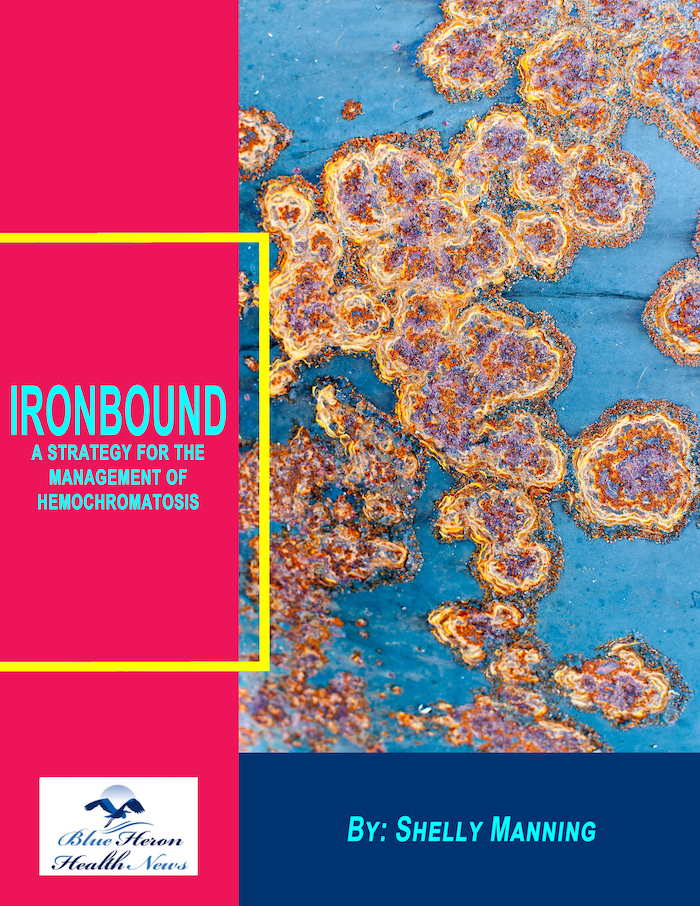
Ironbound™ A Strategy For The Management Of Hemochromatosis By Shelly Manning The 5 superfoods explained by Shelly Manning in this eBook play an important role in reducing the levels of HCT. The absorption of the excessive amount of iron by the genes of HCT can be blocked by these superfoods. In this way, the information provided in this eBook can help in resolving the problem of excess iron in your body naturally without any risk of side effects.
What are the symptoms of hemochromatosis?
Comprehensive Guide to the Symptoms of Hemochromatosis
Hemochromatosis is a genetic disorder characterized by excessive absorption and storage of iron in the body, leading to iron overload. This condition can cause a wide range of symptoms and complications due to the accumulation of iron in various organs and tissues. Recognizing the symptoms of hemochromatosis is crucial for early diagnosis and management to prevent serious health issues. This comprehensive guide outlines the symptoms of hemochromatosis, ranging from early signs to advanced complications.
1. Early Symptoms
The early symptoms of hemochromatosis can be vague and nonspecific, often resembling other common conditions, which can make early diagnosis challenging.
1.1 Fatigue and Weakness
- Chronic Tiredness: Persistent fatigue and a general feeling of weakness are among the most common early symptoms.
- Lethargy: A constant sense of exhaustion that does not improve with rest.
1.2 Joint Pain
- Arthralgia: Pain and stiffness in the joints, particularly in the hands and fingers.
- Swelling: Occasional swelling and tenderness in the affected joints.
1.3 Abdominal Pain
- Discomfort: Generalized abdominal discomfort or pain, often in the upper right quadrant where the liver is located.
1.4 Loss of Libido and Sexual Dysfunction
- Decreased Sex Drive: Reduced interest in sexual activity.
- Erectile Dysfunction: Difficulty achieving or maintaining an erection in men.
- Menstrual Irregularities: Changes in menstrual cycles in women.
1.5 Skin Changes
- Hyperpigmentation: A bronze or gray discoloration of the skin, often referred to as “bronzing.”
2. Intermediate Symptoms
As iron accumulates over time, more pronounced symptoms and complications can develop, affecting various organs and systems.
2.1 Liver Symptoms
- Hepatomegaly: Enlargement of the liver.
- Elevated Liver Enzymes: Abnormal liver function tests indicating liver stress or damage.
- Fatty Liver: Accumulation of fat in the liver, leading to non-alcoholic fatty liver disease (NAFLD).
2.2 Cardiovascular Symptoms
- Arrhythmias: Irregular heartbeats or palpitations.
- Cardiomyopathy: Enlargement and weakening of the heart muscle.
- Heart Failure: Reduced heart function leading to symptoms such as shortness of breath, swelling in the legs, and fatigue.
2.3 Pancreatic Symptoms
- Diabetes Mellitus: Known as “bronze diabetes” due to the combination of diabetes and skin pigmentation changes. This occurs when iron deposits damage the pancreas, affecting insulin production.
3. Advanced Symptoms and Complications
In advanced stages, untreated hemochromatosis can lead to severe and potentially life-threatening complications.
3.1 Severe Liver Disease
- Cirrhosis: Scarring of the liver tissue, leading to liver dysfunction.
- Liver Cancer: Increased risk of hepatocellular carcinoma (liver cancer) due to chronic liver damage.
- Liver Failure: Complete loss of liver function requiring urgent medical intervention, possibly including liver transplantation.
3.2 Endocrine Disorders
- Hypogonadism: Decreased function of the gonads (testes in men, ovaries in women), leading to reduced hormone production.
- Hypothyroidism: Reduced thyroid function, resulting in symptoms such as weight gain, fatigue, and cold intolerance.
3.3 Musculoskeletal Symptoms
- Severe Arthritis: Chronic joint pain, stiffness, and swelling, particularly in the hands, wrists, knees, and ankles.
- Osteoarthritis: Degenerative joint disease due to long-term iron deposition in the joints.
3.4 Skin Symptoms
- Severe Hyperpigmentation: Widespread skin discoloration, giving the skin a bronze or grayish appearance.
- Dry and Itchy Skin: Generalized dryness and pruritus.
3.5 Neurological Symptoms
- Memory Problems: Difficulty with memory and concentration.
- Mood Changes: Depression, irritability, and other mood disturbances.
4. Symptoms in Juvenile and Neonatal Hemochromatosis
4.1 Juvenile Hemochromatosis
- Early Onset: Symptoms appear in adolescence or early adulthood, often before the age of 30.
- Severe Complications: Rapid progression to severe complications such as diabetes, hypogonadism, and heart disease.
4.2 Neonatal Hemochromatosis
- Severe Liver Damage: Rapid accumulation of iron in the liver leading to liver failure in newborns.
- Multisystem Involvement: Iron overload can affect multiple organs, leading to life-threatening complications.
5. Diagnosis of Hemochromatosis
Recognizing the symptoms of hemochromatosis is crucial for early diagnosis and intervention. If hemochromatosis is suspected based on symptoms and family history, further diagnostic tests are required.
5.1 Blood Tests
- Serum Ferritin: Elevated levels indicate increased iron stores.
- Transferrin Saturation: Measures the percentage of transferrin (a protein that carries iron) that is saturated with iron. Levels above 45% may indicate iron overload.
- Liver Function Tests: Assessing liver function and damage.
5.2 Genetic Testing
- HFE Gene Testing: Identifying mutations in the HFE gene (C282Y and H63D) to confirm hereditary hemochromatosis.
- Other Genetic Tests: Testing for mutations in other relevant genes (TFR2, HAMP, SLC40A1) if HFE mutations are not present.
5.3 Imaging and Biopsy
- MRI: Magnetic resonance imaging can assess iron accumulation in the liver and other organs.
- Liver Biopsy: A sample of liver tissue is examined to assess the extent of iron overload and liver damage.
6. Treatment and Management
Early diagnosis and treatment are essential to prevent complications and improve outcomes for individuals with hemochromatosis.
6.1 Phlebotomy
- Regular Blood Removal: The primary treatment for hereditary hemochromatosis is phlebotomy (therapeutic blood donation). Removing blood reduces iron levels as the body uses stored iron to produce new red blood cells.
- Frequency: Initially, weekly phlebotomy may be required until iron levels normalize, followed by maintenance phlebotomy every few months.
6.2 Chelation Therapy
- Iron Chelators: For patients who cannot undergo phlebotomy, medications like deferoxamine, deferasirox, or deferiprone can bind to iron and help remove it from the body.
6.3 Dietary Management
- Limit Iron Intake: Avoiding iron-rich foods, supplements, and vitamin C supplements (which increase iron absorption).
- Avoid Alcohol: Reducing alcohol intake to prevent liver damage.
- Balanced Diet: Maintaining a healthy diet to support overall health without excessive iron.
6.4 Monitoring and Follow-Up
- Regular Monitoring: Frequent blood tests to monitor iron levels and organ function.
- Liver Surveillance: Regular imaging and tests to monitor for liver damage or cancer.
7. Conclusion
Hemochromatosis presents with a wide range of symptoms that can vary from mild to severe, depending on the stage of the disease and the extent of iron overload. Early recognition of symptoms, combined with appropriate diagnostic testing, is crucial for timely intervention and management. Treatment primarily involves phlebotomy to reduce iron levels, along with lifestyle modifications and regular monitoring to prevent complications. Understanding the symptoms and progression of hemochromatosis can help improve outcomes and quality of life for individuals affected by this condition.
Ironbound™ A Strategy For The Management Of Hemochromatosis By Shelly Manning The 5 superfoods explained by Shelly Manning in this eBook play an important role in reducing the levels of HCT. The absorption of the excessive amount of iron by the genes of HCT can be blocked by these superfoods. In this way, the information provided in this eBook can help in resolving the problem of excess iron in your body naturally without any risk of side effects.
